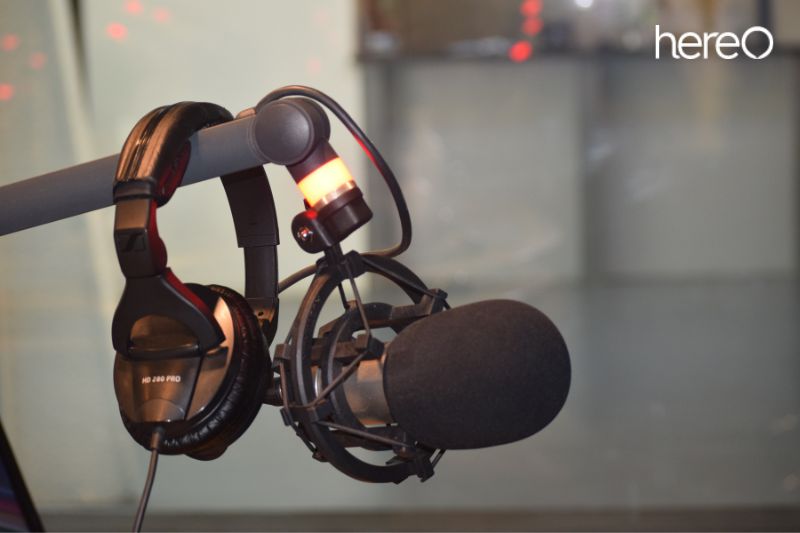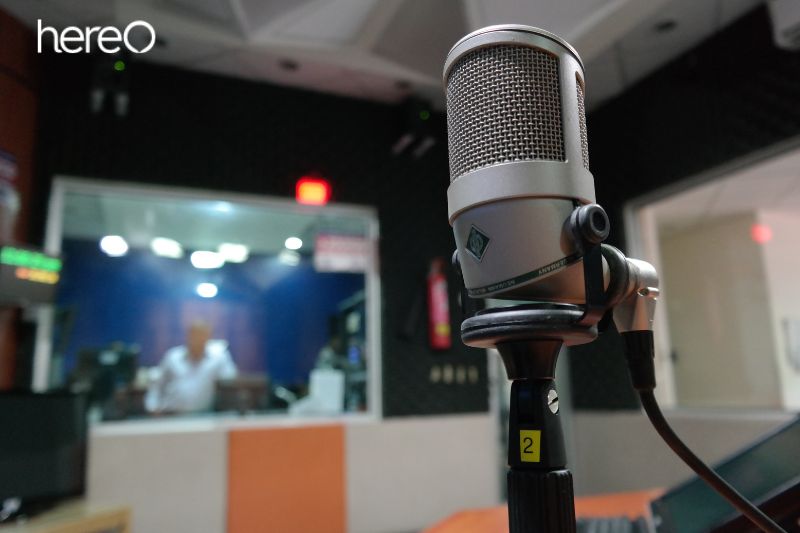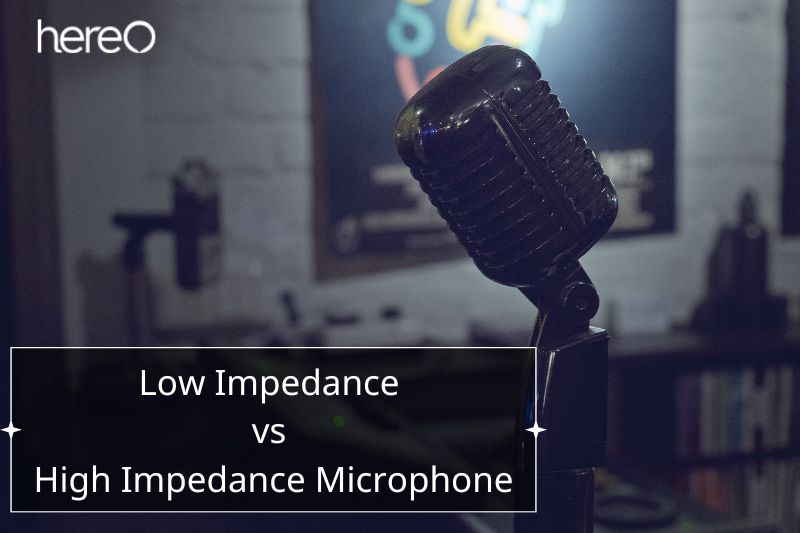You’ve probably seen numbers for output impedance, rated load impedance, or both while going through a microphone’s spec sheet. For true microphone mastery, it is essential to comprehend these impedance levels. So, what is impedance actually? And, what is the difference between low impedance vs high impedance microphone?
Contents
What Is Microphone Impedance?

The simplest explanation of impedance is that it is another word for resistance.
Compared to the very high output impedances you typically find on guitar or bass signals, which struggle to maintain the same signal and fidelity across even 30 meters of cables, microphones have very low output impedance, which allows the signal to travel for a long stretch of cable without signal degradation or loss.
We need to consider, for instance, a transformer: The rest of the preamp circuit must work much harder to transmit that signal to the output of the preamp if the transformer’s input impedance is too low compared to the output impedance of the microphone.
Therefore, in order to make it simpler for the signal to travel through the circuit, we generally want the preamps’ load impedance to perform a lot of the heavy lifting on a lower impedance, such a microphone, right at the start of the circuit.
Output Impedance
Electrical audio signals are AC voltages, as you may know. Impedance is a form of AC resistance, to put it simply. The output impedance of microphones is typically less than 200 ohms.
Long cable runs are possible with such low impedances without any loss in sound quality. Compared to electric guitars, for example, whose high impedance pickups lose a significant amount of top end with cable runs of just 30 ft, this is a big gain.
Load Impedance
The input impedance of the device after the microphone, in this case the microphone preamp, determines the load impedance, not a characteristic of the microphone itself. In technical jargon, a low input impedance denotes a heavy load on the gear before it.
That’s because it requires more effort from its output circuit to drive a low-impedance input. There may be audible distortion as a result, especially at higher volumes. To prevent this, we want high input impedances driving low output impedances of light loads.
The load impedance should be at least five times greater than the output impedance for best results. Therefore, the preamp should have an input impedance of at least 1.000 ohms if the microphone has an output impedance of 200 ohms.
And that is the precise value listed as the “recommended load impedance” or “rated load impedance” on the majority of microphone data sheets. All other specifications are warranted by the manufacturer up to this minimum load impedance.
It’s not a problem at all if your preamp has a greater input impedance. But if you connect your mic to a preamp with a substantially lower input impedance, you might lose some top end and/or low end, and your capacity to handle SPL might be diminished. Your microphone won’t be harmed, though.
How Does It Affect The Sound of The Microphone?

- Higher load impedances (the preamp’s impedance) will result in a higher overall level.
- Additionally, greater impedances have no dampening impact on the higher frequencies but tend to flatten the low-end and low-midrange content of the microphone.
- The output signal will be lower with low load impedances.
- Additionally, low load impedances emphasize the low end and lower middle frequencies more and pick up the resonances further down the spectrum more strongly.
- The upper detail in the mic may occasionally be missing and the upper frequencies may be slightly more muffled.
Low Impedance vs High Impedance Microphone

Low impedance microphones have a lower resistance, meaning they can be connected to a variety of audio devices without loss of sound quality. On the other hand, high impedance microphones have a higher resistance, which may require an amplifier to get a strong signal.
When choosing the right microphone for your needs, the impedance is an important factor to consider. For live performances, low impedance microphones are generally recommended as they can handle larger sound levels without distortion.
However, for studio recordings, high impedance microphones are better because they are able to capture more detail in the sound.
Low Impedance Advantages and Disadvantages
The inexpensive manufacturing cost of high-impedance microphones is their lone benefit. The drawbacks, however, are indeed very significant.
Due to the very high output signal level of karaoke microphones, a high-impedance output is required. Because of the high output, there is no gain staging or amplifier inside the mic, which significantly reduces production costs.
Preamplifiers are not necessary for these microphones to convert their mic level signals to line level.
High-impedance mics have a significant drawback in that they do not function well over lengthy cable distances. The outcome gets worse as the wire length increases.
To make matters worse, the signal is more sensitive to outside interference and noise the higher the impedance. Interference from electromagnetic and radio waves reduces the signal’s signal-to-noise ratio and lowers its quality.
High Impedance Advantages and Disadvantages
Long cable runs (anything practical) are possible with low-impedance microphones without any audible audio signal loss. The attenuation of high-end frequencies would, in theory, be the form of this audio degradation.
Low-impedance microphones do, in fact, attenuate high frequencies to a degree that depends on the length of the wire, just like their high-impedance counterparts.
The attenuation cutoff, though, occurs at frequencies well outside the range of human hearing. In other words, the difference won’t be audible to us.
How Do I Choose The Right Impedance?

When choosing the right impedance for a microphone, there are several factors to consider. Firstly, you need to consider the type of application you will be using the microphone for.
Low impedance microphones are better suited for applications where long cables are needed, such as on stage performances.
High impedance microphones, on the other hand, are better for applications where short distances are required, such as in studio recordings.
Another factor to consider is the frequency response of the microphone. Low impedance microphones tend to have wider frequency responses than high impedance microphones, so they may be better suited for recordings with a lot of detail.
High impedance microphones may be better for applications that require a narrower frequency response.
Finally, it is important to consider the sensitivity of the microphone. Low impedance microphones are typically more sensitive than high impedance microphones, so they may be better for picking up subtle details. High impedance microphones are less sensitive, so they may be better for applications where a strong signal is needed.
FAQs about Low Impedance vs High Impedance Microphone

Why are low impedance mics better?
The output impedance of microphones is typically less than 200 ohms. Long cable runs are possible with such low impedances without any loss in sound quality.
Are professional mics low impedance?
Yes, the output impedance of the majority of professional microphones is 150–250 ohms.
What is the 3 to 1 rule in microphones?
This rule focuses on reducing the audible phasing issues that can occur when converting many microphones to mono. According to the rule, there should be three times as much space between the sound source and each microphone when using several microphones.
Conclusion
Impedance is an important factor to consider when choosing a microphone for your recording needs. Low impedance microphones offer better sound quality and longevity, while high impedance microphones provide greater dynamic range.
Thank you for reading this article from hereOfamily.
